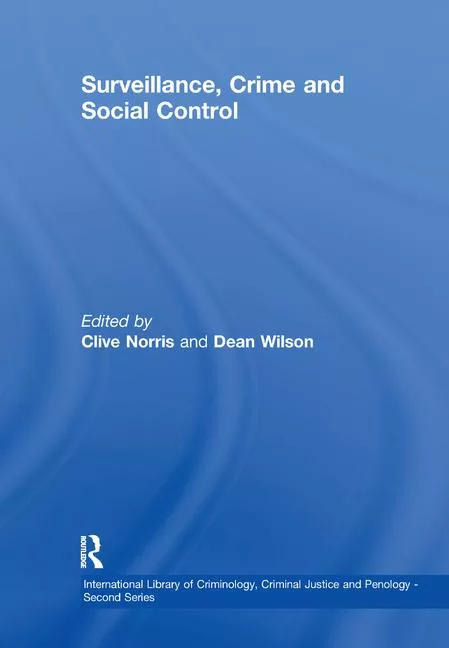NCES releases study on indicators of school crime and safety

A new joint report by the National Center for Education Statistics and the Bureau of Justice Statistics examines crime occurring in schools and colleges.
The report presents data on crime at school from the perspectives of students, teachers, principals, and the general population from an array of sources—the National Crime Victimization Survey, the School Crime Supplement to the National Crime Victimization Survey, the Youth Risk Behavior Survey, the School Survey on Crime and Safety, the Schools and Staffing Survey, EDFacts, and the Campus Safety and Security Survey.
In addition, the report covers topics such as victimization, bullying, school conditions, fights, weapons, the presence of security staff at school, availability and student use of drugs and alcohol, student perceptions of personal safety at school, and criminal incidents at postsecondary institutions.
Preliminary data show that there were 42 schools associated violent deaths from July 1, 2016, through June 30, 2017 (Indicator 1). In 2018, among students ages 12–18, there were about 836,100 total victimizations (theft and nonfatal violent victimization) at schools and 410,200 victimizations away from school (Indicator 2). During the 2017–18 school year, 35 percent of public schools (28,700 schools) took at least one serious disciplinary action for specific offenses (Indicator 18). Of the 958 total hate crimes reported on college campuses in 2017, the most common type of hate crime was destruction, damage, and vandalism (437 incidents), followed by intimidation (385 incidents) and simple assault (83 incidents; Indicator 22).
The following key findings are drawn from brand new indicators in this edition of the report (Spotlights 1 and 2 and Indicator 11) as well as from indicators with updated data (Indicators 1, 2, 6, 7, 18, 19, 21, and 22).
- During the 2017–18 school year, about 51 percent of public schools (or 42,200 schools) reported providing diagnostic mental health assessments to evaluate students for mental health disorders. Approximately 38 percent of public schools (or 31,500 schools) reported providing treatment to students for mental health disorders (Spotlight 1).
- During the 2017–18 school year, 52 percent of public schools reported that inadequate funding was a major limitation in their efforts to provide mental health services to students; 41 percent reported that inadequate access to licensed mental health professionals was a major limitation (Spotlight 1).
- During the 2017–18 school year, the percentage of public schools reporting that inadequate access to licensed mental health professionals was a major limitation in their efforts to provide mental health services to students was higher for traditional public schools (41 percent) than for public charter schools (28 percent; Spotlight 1).
- In spring 2016, physical conflicts among students and student bullying were the two most commonly reported school problems. Based school administrator reports, 25 percent of fifth-graders attended schools where physical conflicts among students occurred at least once a month, 24 percent attended schools where student bullying occurred at least once a month, 5 percent attended schools where theft occurred at least once a month, 5 percent attended schools where widespread disorder in classrooms occurred at least once a month, and 4 percent attended schools where vandalism of school property occurred at least once a month. Fifth-graders whose school administrators reported that certain school problems occurred at least once a month generally had lower scores in reading, mathematics, and science than did those whose school administrators reported that the problem never occurred (Spotlight 2).
- In spring 2016, crime in the neighborhood and selling or using drugs or excessive drinking in public were the two most commonly reported school neighborhood problems. Based on school administrator reports, 34 percent of fifth-graders attended schools where crime in the neighborhood was a problem, 31 percent attended schools where selling or using drugs or excessive drinking in public was a problem, 25 percent attended schools with violence in the neighborhood, 17 percent attended schools with gangs in the neighborhood, and 16 percent attended schools with tensions based on racial, ethnic, or religious differences in the neighborhood. For all five school neighborhood problems reported by school administrators, fifthgraders attending schools where these were a big problem or somewhat of a problem consistently had lower scores in reading, mathematics, and science than did those attending schools where these were not a problem (Spotlight 2).
- A total of 42 student, staff, and nonstudent school-associated violent deaths occurred between July 1, 2016, and June 30, 2017, which included 28 homicides, 13 suicides, and 1 legal intervention death5 (Indicator 1).
- Between July 1, 2016, and June 30, 2017, a total of 18 of the 1,587 homicides of school-age youth (ages 5–18) occurred at school.6 During the same period, 6 of the 2,186 total suicides of school-age youth occurred at school (Indicator 1).
- In school year 2018–19, there were 66 reported school shootings7 with casualties at public and private elementary and secondary schools, including 29 school shootings with deaths and 37 school shootings with injuries only (Indicator 1).
- In 2018, students ages 12–18 experienced 836,100 total victimizations (i.e., thefts and nonfatal violent victimizations) at school and 410,200 total victimizations away from school.8 These figures represent total victimization rates of 33 victimizations per 1,000 students at school, compared with 16 victimizations per 1,000 students away from school (Indicator 2).
- From 1992 to 2018, the total victimization rate and the rates of specific crimes—thefts and violent victimizations—declined for students ages 12–18, both at school and away from school (Indicator 2).
- During the 2017–18 school year, 80 percent of public schools recorded that one or more incidents of violence,9 theft, or other crimes10 had taken place, amounting to 1.4 million incidents. During the same year, 47 percent of schools reported one or more incidents to the police, amounting to 422,800 incidents (Indicator 6).
- The percentages of public schools that recorded one or more incidents of violence, theft, or other crimes and that reported such incidents to the police were lower in 2017–18 than in every survey year between 1999–2000 and 2009–10. However, the percentage of schools that recorded serious violent incidents was higher in 2017–18 than in 2015–16 (21 vs. 15 percent; Indicator 6).
- The percentage of public schools that reported student bullying occurred at least once a week decreased from 29 percent in 1999–2000 to 14 percent in 2017–18 (Indicator 7).
- In 2017–18, about 15 percent of public schools reported that cyberbullying had occurred among students at least once a week at school or away from school in 2017–18. Nine percent of public schools also reported that the school environment was affected by cyberbullying, and 8 percent of schools reported that staff resources were used to deal with cyberbullying (Indicator 7).
- In 2018, some 93 percent of lower secondary teachers in U.S. public schools reported that they were able to make expectations about student behavior clear quite a bit or a lot, 88 percent reported that they were able to get students to follow classroom rules quite a bit or a lot, 85 percent reported that they were able to control disruptive behavior in the classroom quite a bit or a lot, and 80 percent reported that they were able to calm a student who is disruptive or noisy quite a bit or a lot. These percentages were not measurably different from the respective OECD averages (Indicator 11).
- Among lower secondary teachers in public schools in the United States, lower percentages of teachers with less than 3 years of teaching experience than of teachers with more years of teaching experience, in general, reported being able to manage various aspects of student behavior quite a bit or a lot (Indicator 11).
- During the 2017–18 school year, 35 percent of public schools (28,700 schools) took at least one serious disciplinary action—including outof-school suspensions lasting 5 or more days, removals with no services for the remainder of the school year, and transfers to specialized schools— for specific offenses (Indicator 18).
- The percentage of public schools taking at least one serious disciplinary action was lower in 2017–18 than in 2003–04 across all specific offense types except the distribution, possession, or use of alcohol, for which there was no measurable difference between the two years (Indicator 18).
- The percentage of public schools reporting the use of security cameras to monitor the school increased from 19 percent in 1999–2000 to 83 percent in 2017–18 (Indicator 19).
- The percentage of public schools that had a written plan in place for procedures to be performed in the event of an active shooter increased over time, from 79 percent in 2003–04 to 92 percent in 2017–18 (Indicator 19).
- The percentage of public schools that reported having one or more security staff present at school at least once a week increased from 42 percent in 2005–06 to 61 percent in 2017–18. In 2017–18, greater percentages of high schools (84 percent) and middle schools (80 percent) reported having any security staff, compared with primary schools (51 percent; Indicator 19).
- In 2017, about 28,900 criminal incidents on campuses at postsecondary institutions were reported to police and security agencies, representing a 2 percent increase from 2016, when 28,400 criminal incidents were reported. The number of on-campus crimes reported per 10,000 full-time-equivalent students also increased, from 19.3 in 2016 to 19.6 in 2017 (Indicator 21).
- The number of on-campus crimes reported in 2017 was lower than the number reported in 2001 for every category except forcible sex offenses, murder, and negligent manslaughter. The number of reported forcible sex offenses on campus increased from 2,200 in 2001 to 10,400 in 2017 (a 372 percent increase; Indicator 21).
- In 2017, out of the 958 total hate crimes reported on college campuses, the most common type of hate crime was destruction, damage, and vandalism (437 incidents), followed by intimidation (385 incidents) and simple assault (83 incidents). These were also the three most common types of hate crimes reported by institutions from 2010 to 2016 (Indicator 22).
- Race, religion, and sexual orientation were the categories of motivating bias most frequently associated with hate crimes at postsecondary institutions in 2017 (Indicator 22).
Looking for a reprint of this article?
From high-res PDFs to custom plaques, order your copy today!






